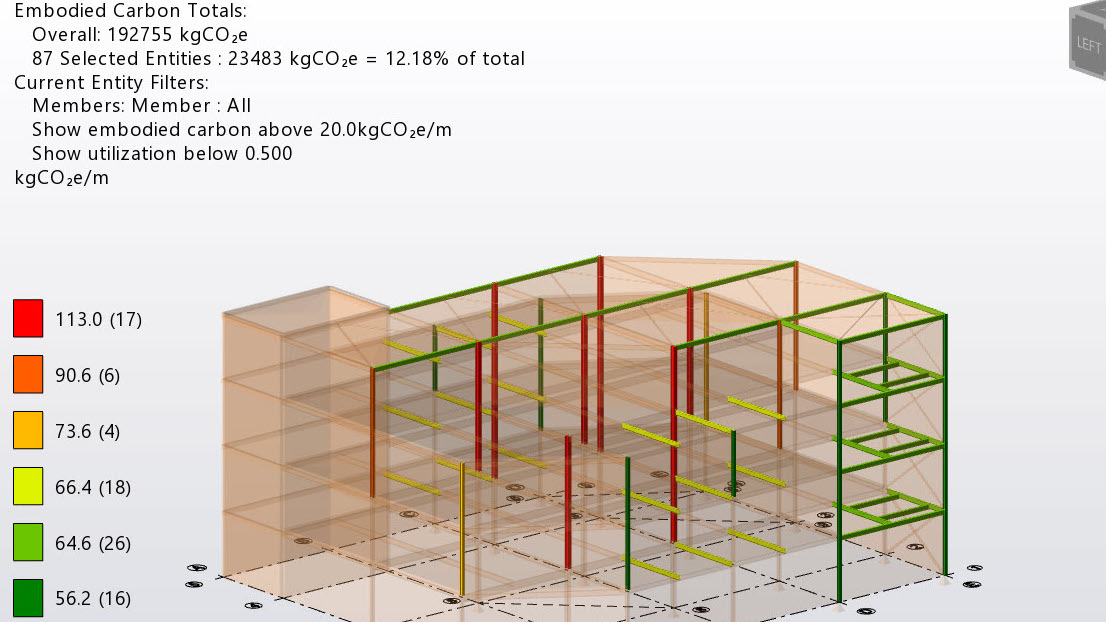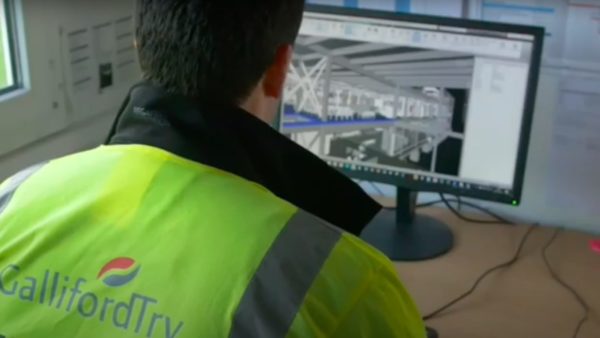
A building’s constructible 3D model is a mine of information that can be used to enable a circular economy approach. Here, Steve Insley of Trimble explores how a digital approach can open the doors to material reuse and construction circularity.
Circularity in construction is about repurposing assets that are already in use. And technology can play an important part in repurposing existing structures and extending their lifespan to meet current requirements.
For existing buildings due for demolition, now often referred to as donor buildings for disassembly, materials can be identified and harvested for potential repurposing or reuse for a new building project. This circular approach is picking up pace globally.
In the UK, it’s estimated that around 200,000t of steel sections come out of buildings every year – buildings that are either being repurposed, refurbished or demolished. Of course, not all that steelwork can be reused elsewhere, but a large portion of it can. If all the steel sections coming out of buildings are reused, it could save an amount of carbon equivalent to that required to heat 150,000 UK homes for a year. So, where does technology slot in?

“If all the steel sections coming out of buildings are reused, it could save an amount of carbon equivalent to that required to heat 150,000 UK homes for a year.”
Smarter site surveys
First, there’s surveying hardware carrying out 3D laser scans or cloud point surveys. This provides data on the existing building that can be imported into the 3D modelling environment, where it can be further shared and analysed. This provides critical understanding of the building’s structural design and potential to design the new around the existing.
Digital tools can then be used to aid steel reuse by applying materials passports and tagging elements in BIM models. Inventory-based design can be used to limit the steel sections to those coming from a donor building, or from the market.
Structural and civil engineering practice Elliott Wood Partnership is a great example of this approach in action. On a recent refurbishment project, the team looked at how the steel being removed from the existing building could be reused and reintroduced in extension works. This included taking the 15m steel beams from the current roof level and cutting them down to use as 12m spans for the new roof level above.
While there are several barriers to achieving this, the market is moving fast and engineering practices such as Elliott Wood are playing a large role in developing approaches to maximise reuse potential.
Carbon optioneering
At the concept design stage, parametric design tools like Grasshopper can be invaluable for optioneering (where you compare different materials, foundation types and column layouts and their carbon emissions), enabling a quick rough optimisation on carbon and cost. This concept forms the basis for a structurally engineered design model, where further optimisation can be done.
Bringing carbon into the design and decision-making process – in much the same way as cost, time and quality drivers already are – is vital. All too often, we see carbon calculations being carried out after key structural decisions have already been made.
Having carbon calculations built into design software means the time-consuming process of calculating carbon is removed, enabling engineers to better understand the impact of their design decisions. Simply set up the relevant carbon factors at the start of the project and the carbon calculation is automatically generated and updated as a project or model progresses.
Calculations and visualisations produced using such software means carbon can be communicated so much more effectively. Visualising design decisions and sharing project insights with other professionals is quicker. Reporting and recording are easier, enabling data collection, target setting, and reducing emissions for future projects too.
“With the technology available now and in the future, it is worth challenging any assumption made where rationalisation is adopted over optimisation.”
Optimisation vs rationalisation
Taking this further, engineers can use software features to find any ‘hotspots’, highlighting members with high carbon and low utilisation, where structural components aren’t ‘worked hard’ enough for risk management reasons.
Ingrained industry behaviours tend to turn to a rationalisation approach, where components with similar geometries and load actions are grouped and designed as one. While done to save time and simplify the design and construction process, it can often result in the use of additional material to cover design uncertainties or unknowns.
While such an approach makes sense when there is repetition or risk to mitigate, with the technology available now and in the future, it is worth challenging any assumption made in the design stage where rationalisation is adopted over optimisation. Instead, the balance must shift from rationalisation towards optimisation, bringing highly accurate and constructible data to site and making sure every part of the structure is optimised from the outset, reducing material wastefulness and the resulting total carbon value.
Designing for disassembly
By having the intention of end-of-life disassembly and the material value of re-use in mind when detailing and fabricating structural steel components, circularity simply becomes part of the design process.
This doesn’t only relate to structural steel either. With the rising popularity of structural timber and lightweight concrete, there are also new tools and features that facilitate a bi-directional and integrated workflow in a multi-material sense, whereby timber-specific design data or calculations can be sent back to the 3D model.
Now, with manufacturers incorporating traceable technologies into their products, future proofing the golden thread of the data in the model is even more crucial.
"Having end-of-life disassembly and the material value of re-use in mind when detailing and fabricating structural steel components, circularity simply becomes part of the design process."
BIM model for future circularity
For new buildings, the BIM model needs to technologically stand the test of time so that in several decades, at the time of disassembly, a highly accurate model is still available. Likewise, for complex and large construction and civil engineering projects (such as Hinkley Point C) that take years to deliver, trusted and immutable data must remain accessible to any party that is starting work on the latter stages of such mega-projects – perhaps five or more years after the initial construction models were issued. Software interoperability is vital.
Here, boot-strapped IFC files become incredibly important, with this format of file remaining usable and accessible even if the modelling software originally used has since advanced to a newer version, or is even redundant. Trimble takes an open approach to BIM, meaning that IFC files of our BIM models remain functional and accessible.
Closing the circular loop
With obvious FM benefits in the ‘use’ phase of a building’s lifecycle, by accessing modelling data from the past and using the latest technological advances, it is also possible for site teams to view the hidden structure within existing assets by using augmented-reality solutions or mixed-reality technology.
On redevelopment projects, having the golden thread of high-quality and easily accessible data can save considerable time. As well as resulting in a more productive and sustainable outcome, it negates the need for engineering teams to first carry out extensive surveys or scans to bring the existing asset into the digital environment of the present day.
So, let’s make 2024 the year to drive construction forward digitally, to capitalise on the value of a circular approach for everyone involved and, especially, for our planet.
Don’t miss out on BIM and digital construction news: sign up to receive the BIMplus newsletter.















